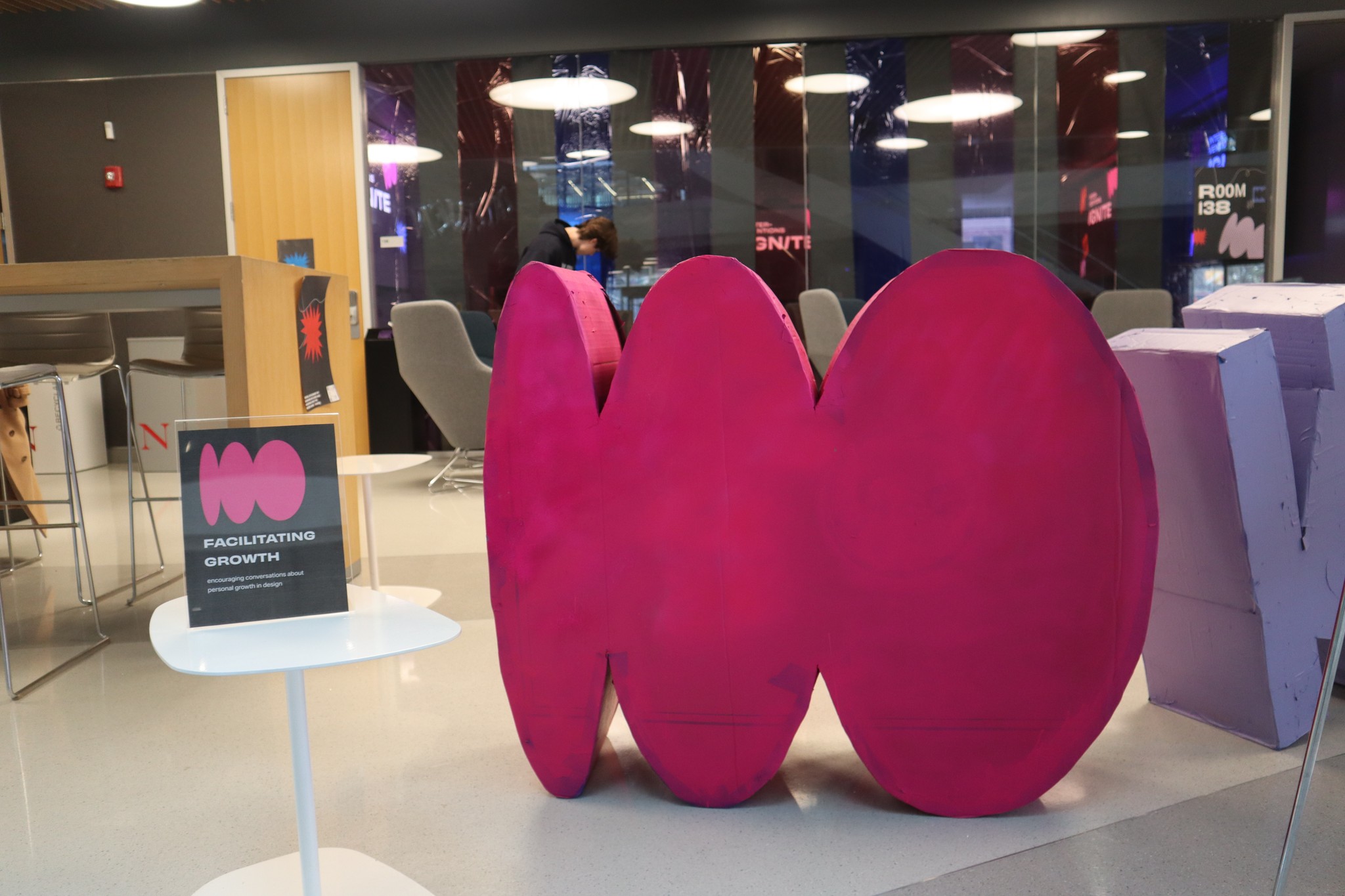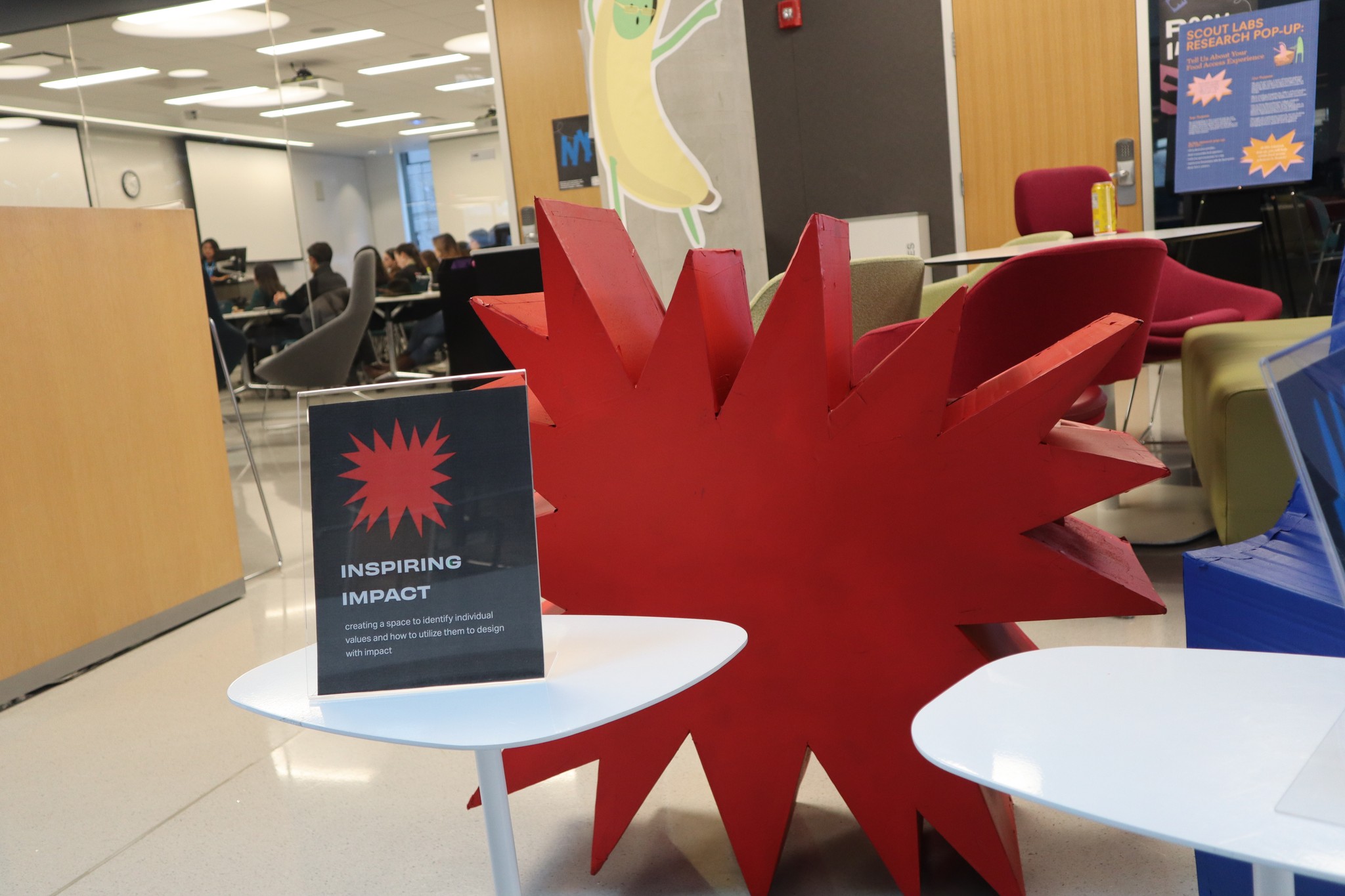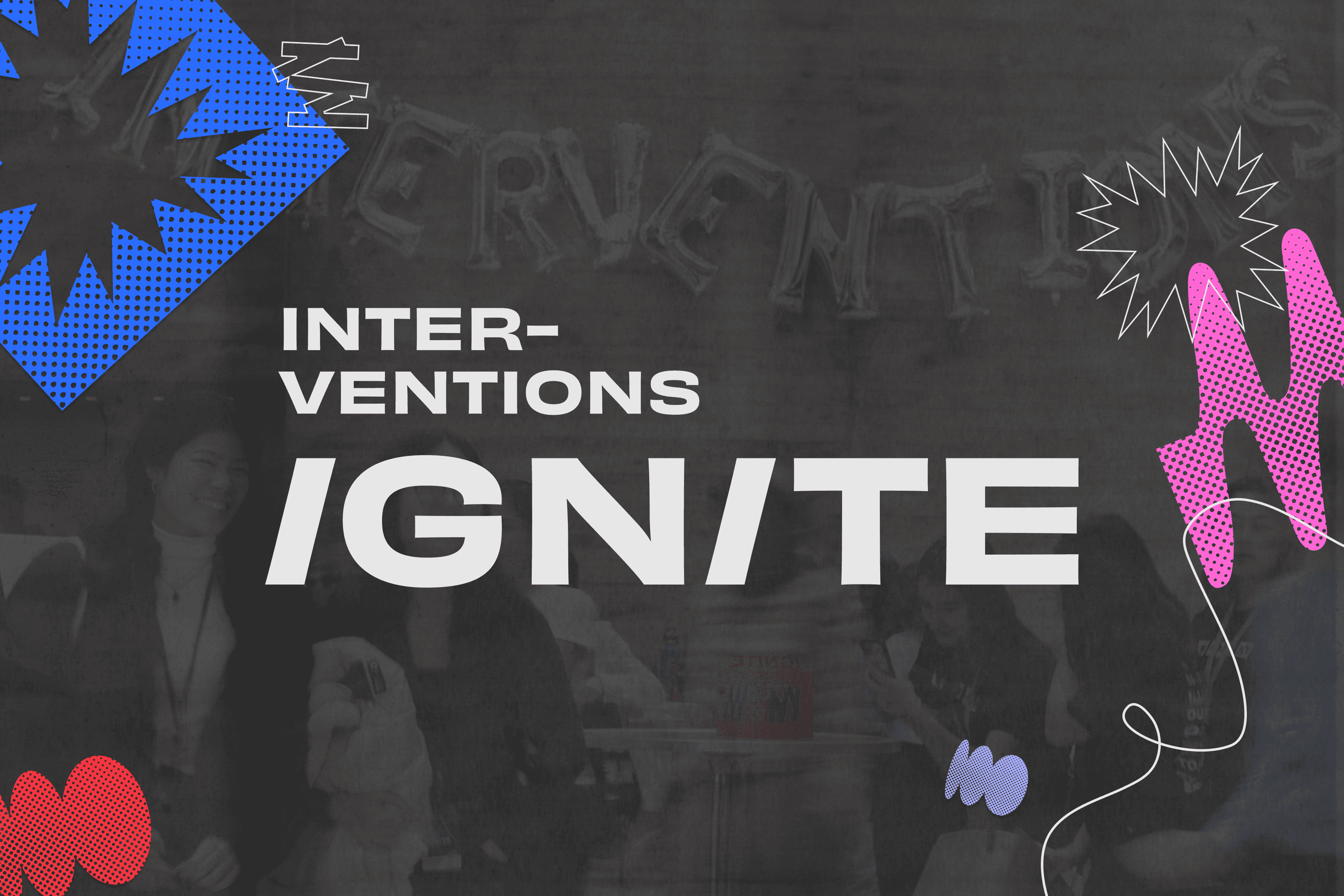
Project Summary 📝
OBJECTIVE
Design and execute engaging and impactful experiences for Interventions: Ignite, a one-day design conference.
ROLE
UX & Operations Lead
RESPONSIBILITIES
Led the UX team in crafting a cohesive event experience, integrating life-sized displays, AR displays, and a thoughtfully structured schedule
Collaborated with a cross-functional team to ideate, design, and implement interactive touchpoints that aligned with the event's theme of revealing hidden potential and fostering innovation
IMPACT
Our efforts enhanced the conference experience, leading to a 10% increase in attendance from the previous year and engaging 200+ attendees across 12 universities. We successfully integrated UX into the event through interactive installations like AR scavenger hunts and sculptural displays, setting a new standard for future UX teams by defining their role and contributions.
THE CHALLENGE
Creating an Immersive Experience 🫧
As part of Scout’s inaugural UX team, I saw this project as an opportunity to apply UX principles beyond screens. Our goal was to create meaningful touchpoints that would transform the attendee experience from passive to participatory.
THE PROBLEM
How do we go beyond traditional event formats to craft an engaging, interactive conference that fosters connection and inspiration?
OUR APPROACH
Blending Digital & Physical Interactions 🪄
Research-Informed Design
We analyzed feedback from previous years and identified key opportunities through "How Might We" questions, setting the foundation for innovation. This research directly informed our interactive designs, ensuring that they were engaging and seamlessly integrated into the environment.
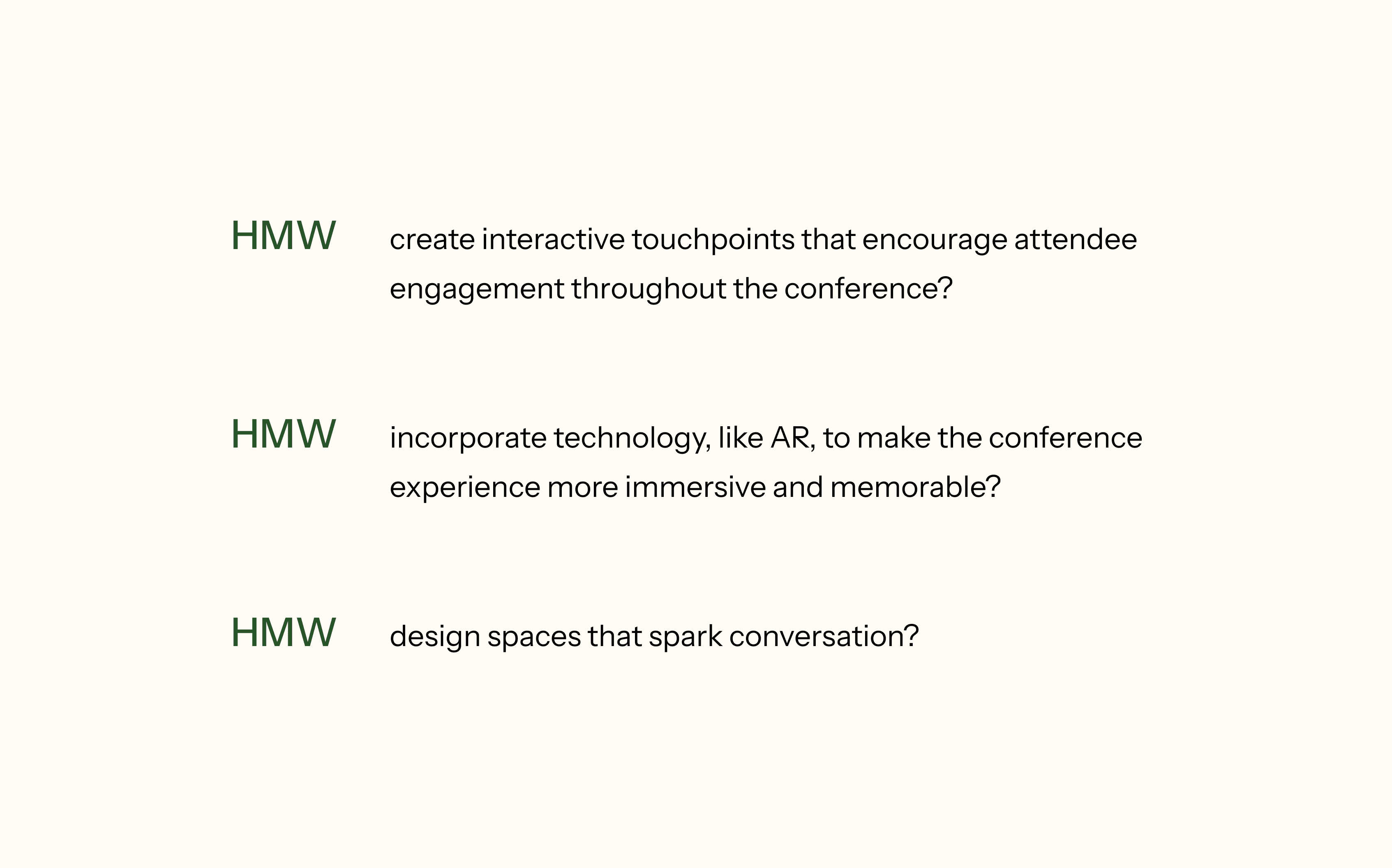
Sketching for a Breadth of Ideas
To generate a diverse range of ideas, I led a sketching session with our team of six designers as well as our Conference Director. We brainstormed different ways attendees could engage with the space and documented a variety of ideas before refining them into feasible solutions. At the end, we created a quick storyboard to figure out how an attendee will walk through our experiences.
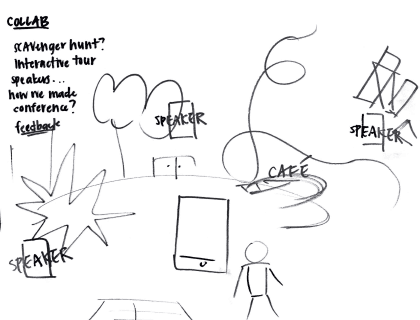
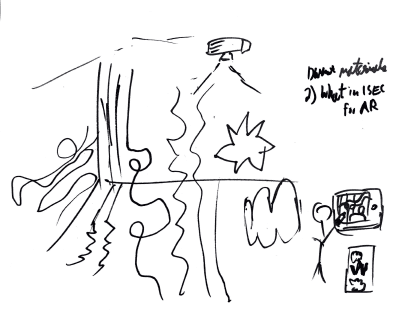
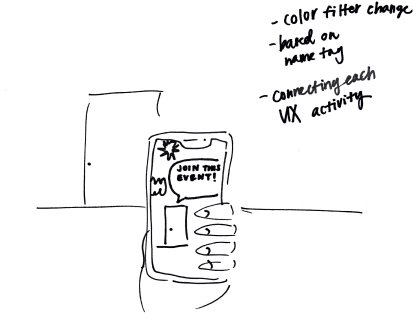

Select sketches from the team which showed we were all united in our ideas.
FINAL EXPERIENCE
Interactive Installations 🎮
AR Scavenger Hunt
Using Hoverlay, we created an interactive journey where attendees scanned QR codes to reveal insights about the event theme. This experience encouraged exploration and added a digital layer to the conference space, making information more accessible and engaging.
We used Hoverlay to allow attendees to view brand elements throughout the atrium space of atrium.
"The Lookout" Sculptures
Inspired by the conference's branding, these handcrafted sculptures served as immersive waypoints throughout venue. To bring this idea to life, I proactively reached out to various Northeastern resources, including Materials & Recycling Department to source sustainable materials. This collaboration helped strengthen ties between different departments and showcased our commitment to sustainability.
Handmade sculptures placed around the atrium represented the different themes of the conference.
IMPACT & RESULTS
Conference, by the Numbers 📊
Our efforts not only enhanced engagement but also contributed to measurable suceess:
218
total attendees
10%
increase in attendees, from the previous year
12
universities represented
17
headlining speakers
Establishing UX Team Framework 🚧
As the first UX Lead, I defined team roles and structured workflows, empowering each designer to lead a mini-project. By leveraging the diverse strengths of our team, we ensured that every element of the conference experience was thoughtfully designed and well-executed. This framework set a precedent for future UX teams in Interventions' conference planning.
The final upload flow shows how users can upload cash into any account once they go to a point-of-sales location.
Key Learnings 💡
Design goes beyond screens. This project expanded my understanding of UX in physical spaces.
Leadership through collaboration. I grew from a contributor to a project lead, balancing vision-setting with empowering my team.
Playing to strengths drives success. Assigning ownership based on team skills ensured every element came together cohesively.
Final Thoughts 💭
Seeing attendees engage with our installations and hearing their excitement made the months of effort worth it. More than just a conference, Interventions: Ignite became an experience, shaped by intentional design, strategic planning and a passion for innovation and sustainability.
TEAM
Conference Director - Kimberly Do
UX & Operations Lead - Vanessa Peng
UX Designers - Adeline Park, Amy Yang, Albee Mote, Autumn Fung, Preet Singh


